|
Junkers Ju 88 A-4

Revell, 1/48 scale
S u m m a r y : |
Catalogue Number: |
Revell Kit No. 03935 - Junkers Ju 88 A-4 |
Scale: |
1/48 |
Contents & Media |
Total of 286 plastic parts made up from eight sprues of grey plastic and two sprues of clear plastic; markings for two aircraft. |
Price: |
Available online from these stockists:
Click here for currency conversion |
Review Type: |
First Look. |
Advantages: |
High quality plastic and resin parts; high level of detail; crisp and fine surface textures; comprehensive instructions. |
Disadvantages: |
|
Conclusion: |
Another excellent Ju 88 release, and as this is Revell, you know that the price point is spot on – highly recommended. |
Reviewed by James Hatch

Special Hobby’s Mirage F.1B/BE is available online from Squadron.com
The Junkers Ju 88 was a German World War II Luftwaffe twin-engine multirole combat aircraft. Junkers Flugzeug- und Motorenwerke (JFM) designed the plane in the mid-1930s as a so-called Schnellbomber ("fast bomber") that would be too fast for fighters of its era to intercept. It suffered from a number of technical problems during later stages of its development and early operational roles, but became one of the most versatile combat aircraft of the war. Like several other Luftwaffe bombers, it served as a bomber, dive bomber, night fighter, torpedo bomber, reconnaissance aircraft, heavy fighter and, during the closing stages of the conflict in Europe, as a flying bomb. Despite its protracted development, the aircraft became one of the Luftwaffe's most important assets. The assembly line ran constantly from 1936 to 1945 and more than 16,000 Ju 88s were built in dozens of variants, more than any other twin-engine German aircraft of the period. Throughout production the basic structure of the aircraft remained unchanged.
Without a doubt, the Junkers Ju 88 was one of the most versatile and adaptable aircraft to have been used during WW2. Entering service as the war was literally starting (on the day of the Polish attack), the Ju 88 became successful for its numerous famous and infamous roles, starting out as a light bomber/dive bomber, and when losses started to mount around the time of the Battle of Britain, it was moved into other theatres of war, such as North Africa, and against shipping in the Mediterranean with a torpedo-carrying variant. Where it is perhaps best known are for its roles as both a heavy fighter and night-fighter, in which it excelled.
Courtesy of Wikipedia.
It doesn’t take long these days for fairly new-tooled models to see releases under another banner. This is certainly the case with ICM kits. In fact, this particular model was initially released by ICM in 2015 as an A-5, and has already seen subsequent variant releases by both ICM, Hasegawa and Special Hobby, the latter who recently gave us their amended C-4 variant of this plastic, reviewed here.
More releases are already planned. There seems to be a reason why we are seeing this kit being given multiple releases and that is simply because it is the definitive tooling of this important aircraft that is currently available, and with so many Ju 88 versions that existed, modellers are going to want to build the one that is specific to their interests, such as the heavy fighter, torpedo aircraft etc.
According to Revell, their website spiel is as thus:
-
Detailed cockpit
-
Distinctive instrument panel
-
Tail wheel
-
Ventral gondola
-
Separate ailerons and flaps
-
2 detailed engines
-
Rotatable propeller
-
Detailed under-carriageDetailed machine guns]
-
Decal set for the markings of Luftwaffe versions
Packaged into Revell’s notoriously flimsy end-opening box, this kit contains a single clear sleeve that holds all EIGHT medium-grey sprues and a single clear one. A total of 286 parts makes up this release. Thankfully, the clear sprue is separately bagged within, even if all the others are tightly packed up against each other. In all fairness, this will have been bagged by ICM and not Revell, but I still don’t like the possibility of scuffed, damaged and loosened parts. A colour A4 manual is included, and a single decal sheet finalises the contents.
I know that some modellers can be driven to frustration by the engineering choices that some companies make, but with this kit, ICM has boxed clever. It is designed to accommodate other versions so as to maximise the tooling, but none of this is done to the disadvantage of the modeller.
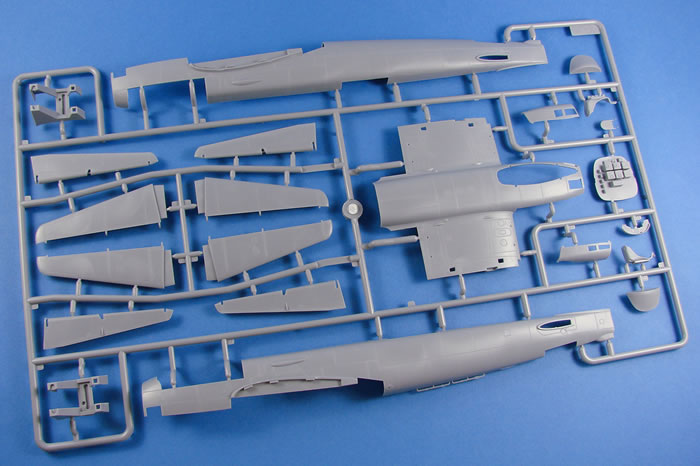
Some very intelligent design work can be seen here, such as the fuselage halves being full length, so no need to graft on different nose versions. The fin is also separate, indicating something from the 88G family, maybe. Wing root fairings are moulded to the fuselage and are tabbed, meaning that the upper wing panels can easily sit on these and provide a positive location point.
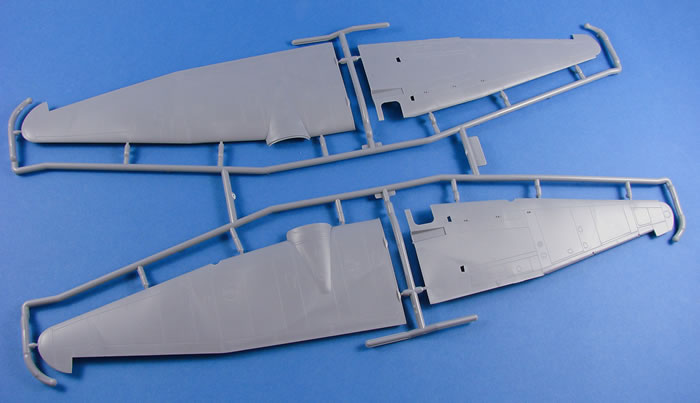
Another touch of genius is a single piece lower fuse and inboard wing panel section. When this is fitted to the fuselage, and then the wing panels added, the lower seam will be totally hidden under the broad nacelle structure. The nacelles themselves will then locate into the undersides via tabs.
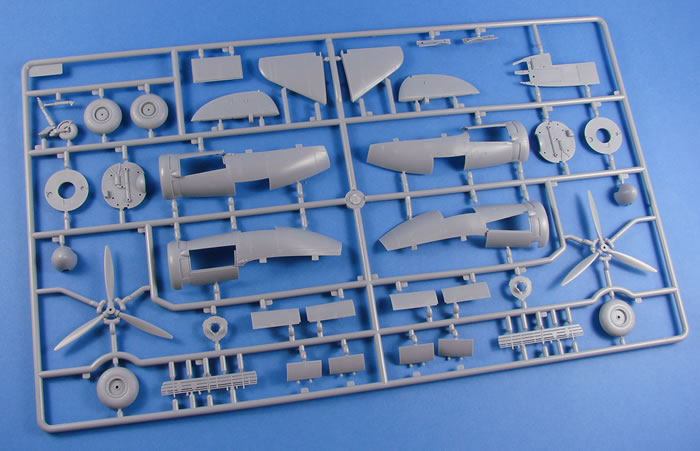
If you’ve ever seen the Revell 1/32 kit, you’ll know that there is a sturdy structure within the nacelle that the undercarriage is mounted to. Looking at this model, I think that whilst you may need to fit that mounting structure prior to the nacelle, it appears that you can probably fit the landing gear later, after painting. All control surfaces on this model can be posed, with the rear of the nacelles being separate for this purpose. You may need to fiddle things with this, and I can’t comment further without test fitting this one.
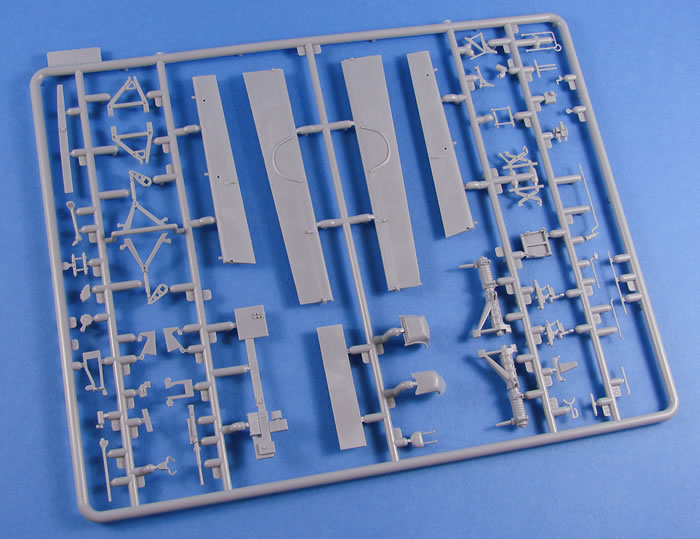
Two detailed Jumo211 engines are included in this kit, with the provision to display one/either of them. These really do look very good, with each unit containing around 15 parts per engine, including the firewall and associated plumbing.
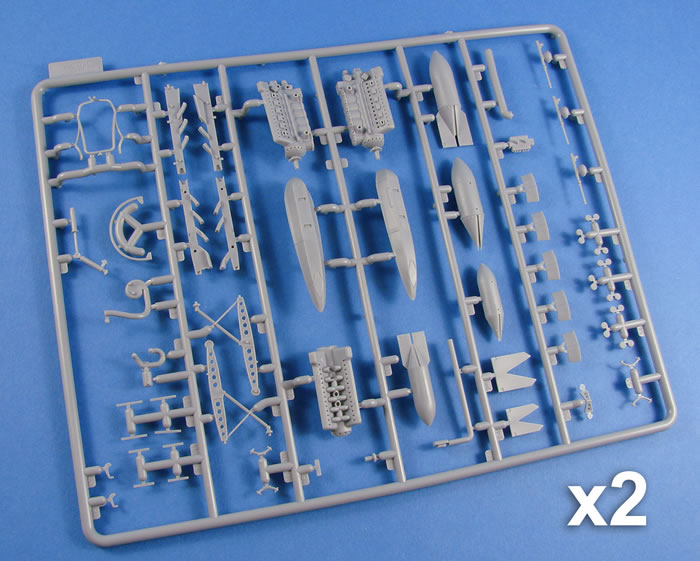
The engines must be installed within the nacelle before the whole assembly is offered to the wing. You’ll need to make sure your painting and masking regime is good here. Cowl radiator flaps are presented as open only, so to pose these in the more aesthetically pleasing closed position, you will need to do a little surgery. Propellers are supplied as single piece units, and the spinner comprises of the typical back-plate and front section.
If you expect a lot from the cockpit area, in terms of detail, then this won’t disappoint. Whilst there is no specific Eduard sets for this release at the time of writing, some areas could still use some of the sets designed for the ICM release. As no seatbelts are included in this kit, you will definitely need to sort out that omission. The office area is very well-appointed, with nicely moulded fuselage sidewall details, superbly equipped radio rear bulkhead, ammunition racks and drums, detailed instrument panel, side consoles with delicately rendered instruments, two-piece control column, rudder pedal assemblies, seats with intricate mounting points etc. I don’t really think there would be much to add in here, with the exception of some colour PE, perhaps. When assembled the cockpit will most certainly be a very busy and visual area. The bola gondola is well-appointed too, and this area is moulded separately to the underside fuselage, and can be fitted later in assembly.
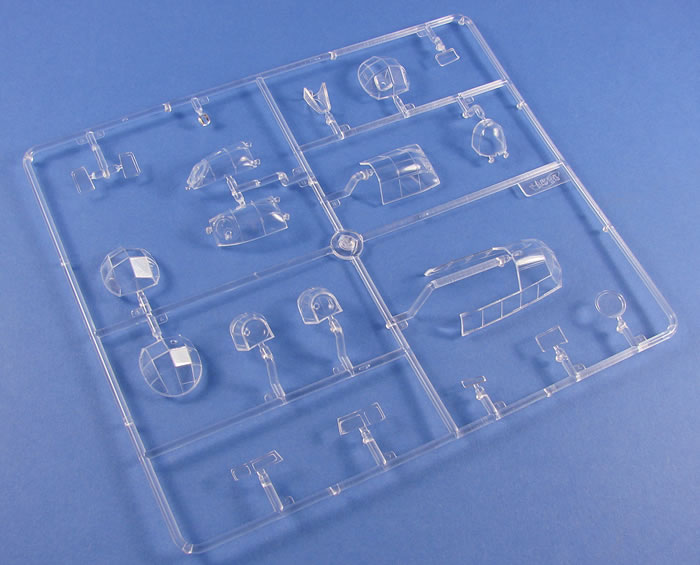
Surface detail is everything you would expect from a modern-tooled model, with finely engraved panel lines and port details. There are also no rivets at all, so if you do want them, then you’ll have to get out Rosie. Plastic quality here is excellent with no flaws or obtrusive ejector pin marks. Clear plastic parts, both ICM and Special Hobby, are superb, with excellent clarity and nicely defined frame details. Two options are provided for the front glass nose, with weapon placement in one of them.
Marking Options and Decals
A Cartograf-printed decal sheet contains markings for TWO marking schemes, with all printing being in solid, authentic colour, with minimal carrier film and also being both nice and thin. Registration is perfect too. As well as markings, a full suite of stencils are included as are instrument decals.
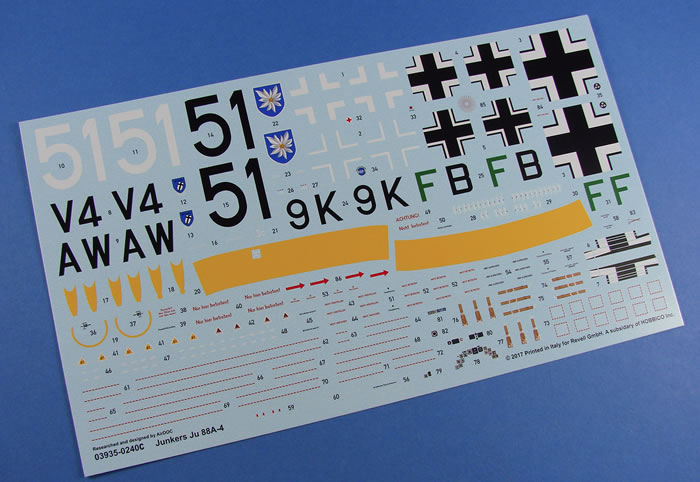
The three schemes are:
-
Ju 88A-4, Werknummer 8643, V4+AW, 12./KG1 “Hindenburg”, 1943
-
Ju 88A-4, Werknummer 1050, 9K+FB, Stab I./KG51 “Edelweiss”
Instructions
Revell’s new style instruction manuals are very attractive and easy to follow, having ditched their crude looking line drawing format a short while ago. The first part of the manual highlights the colours needed for completing this model, as well as parts maps of the sprues. There are 90 constructional stages that are shown in clear, unambiguous illustration, with good symbology use of colour to denote specific parts. The rear of the manual has two sheets for each of the schemes, printed in colour and with good decal placement notes.
Another excellent Ju 88 release, and as this is Revell, you know that the price point is spot on.
This kit currently retails for around £30 or less in the UK, and I think that relates to excellent value for money when you look at the detail levels that are provided here.
The A-4 was a pretty common variant from around the end of the BoB until the latter stages of the war, so I’m sure there will be a good number of aftermarket decal sets available to tempt you, with some great schemes to choose from.
Of course, this is an in-box review, and I’ve not looked at the fit of this. I have seen a small number of these built though, and spoken to modellers who have built others, and they claim no real problems in construction. ICM’s engineering seems to be logical and sensible, and without the annoyances of the earlier, unrelated Dragon releases.
Highly Recommended
Thanks to Revell for the review sample.
Review Text and Images Copyright © 2017 by James Hatch
Page Created 10 May, 2017
Last updated
10 May, 2017
Back to HyperScale Main Page
Back to Reviews Page |
